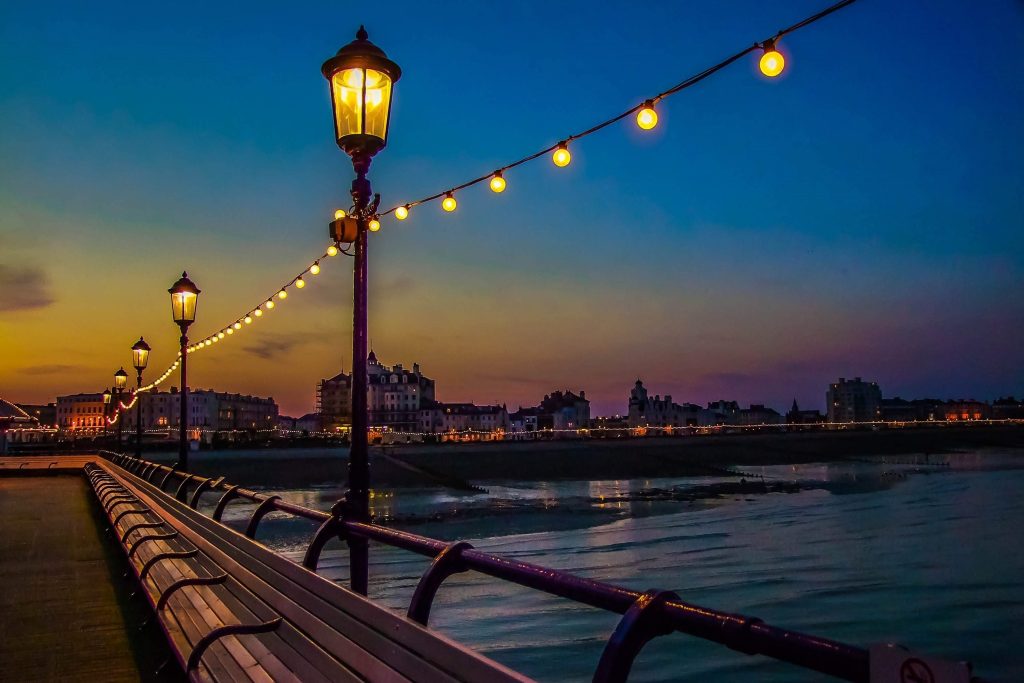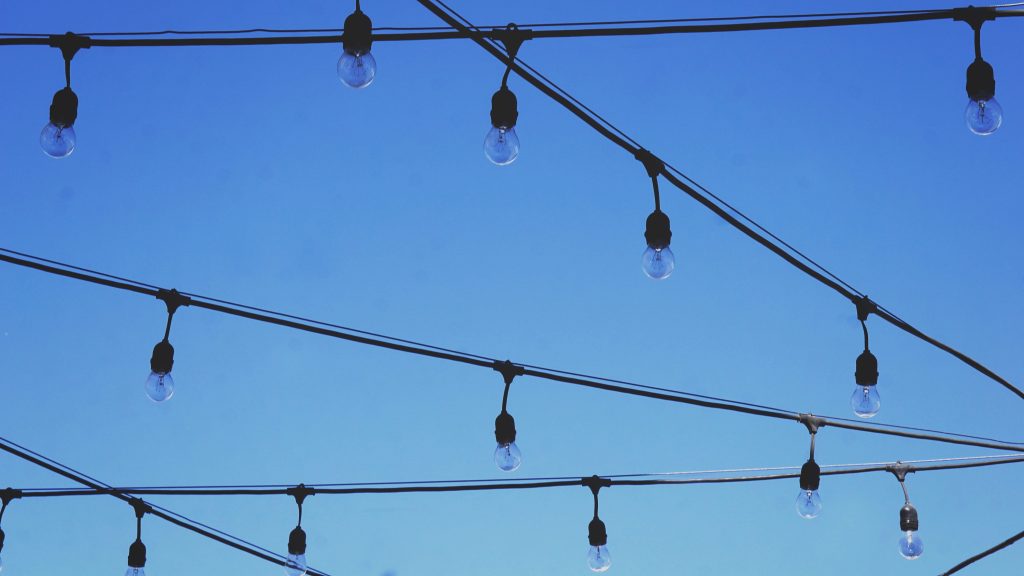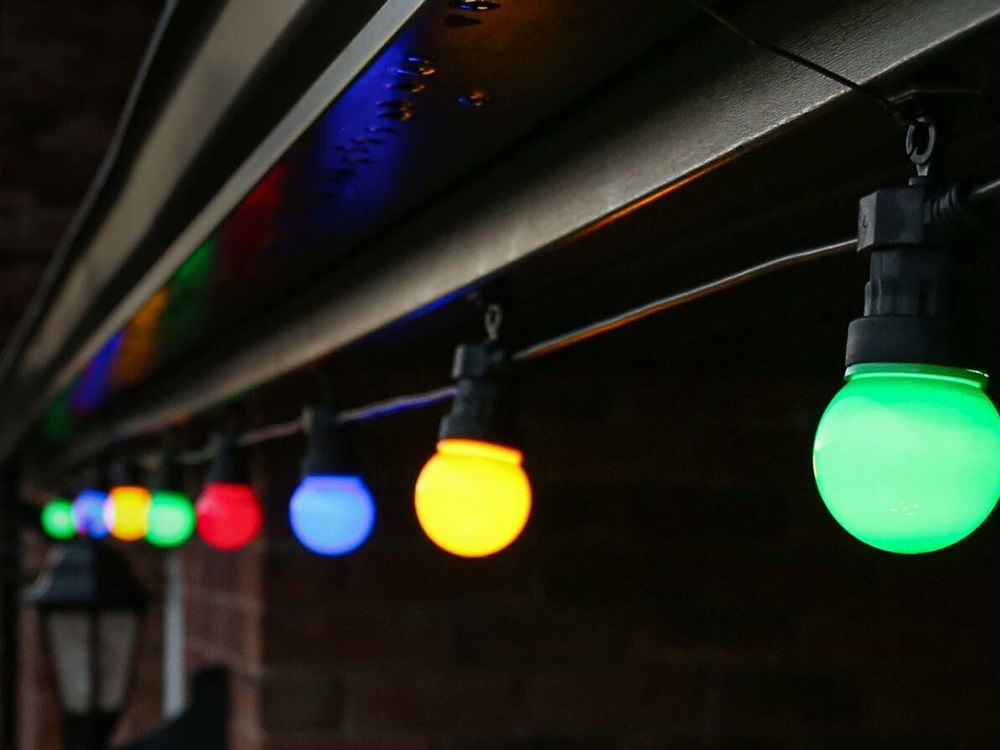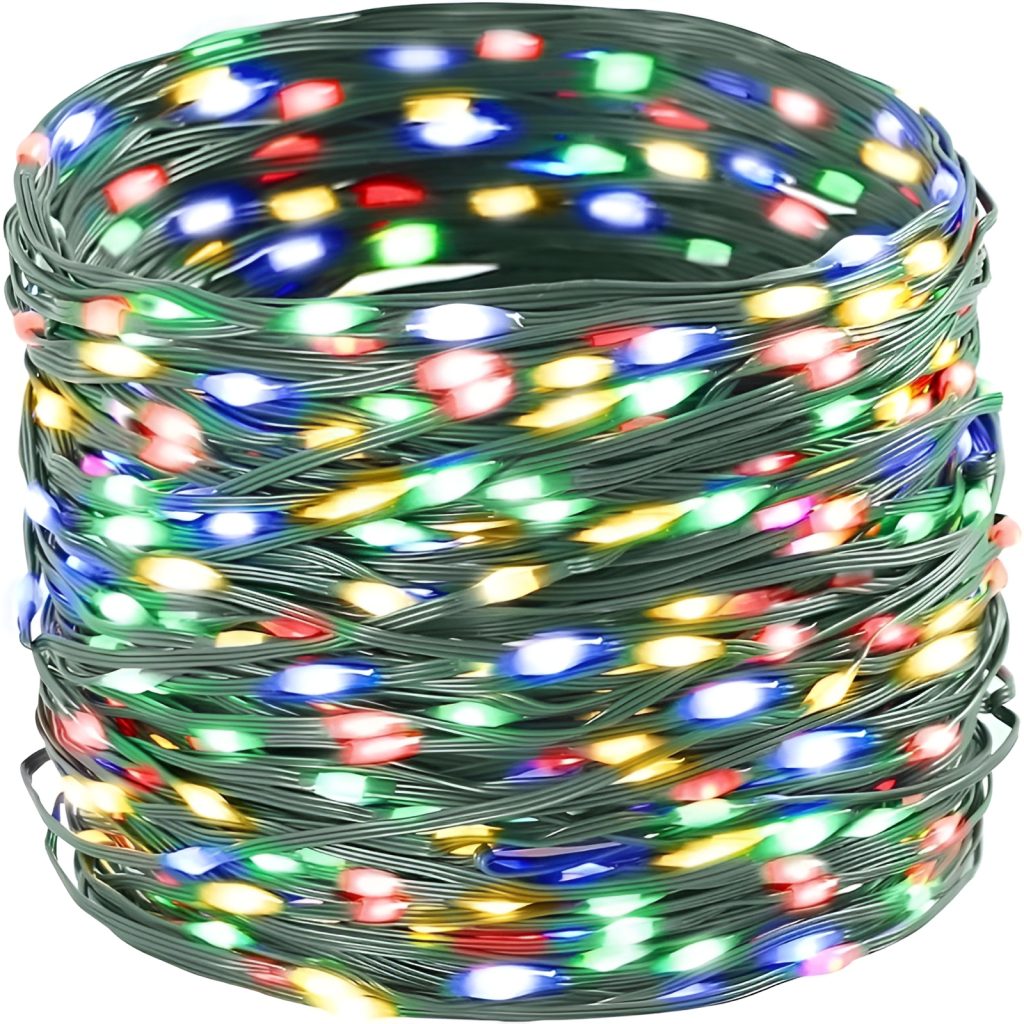A Detailed Guide to Distinguishing Indoor and Outdoor String Lights
Lighting the World of String Lights
When it comes to creating an enchanting ambiance, few elements are as transformative as the soft glow emanating from string lights. A veritable staple in numerous decorating scenarios, string lights have a remarkable versatility, brightening up spaces with their delicate and alluring radiance.
From lively Christmas tree decorations and vibrant party lights to romantic bedroom accents and cozy living room adornments, they add a touch of magic wherever they are used. Increasingly popular too is their use in outdoor environments.
Landscape string lights have the ability to convert even the most mundane of gardens into idyllic retreats or transform a simple patio into an inviting alfresco dining area. They imbue these open-air spaces with a warm, welcoming aura that’s hard to resist.
In essence, string lights offer an affordable and creative way to augment the aesthetic appeal of both indoor and outdoor spaces. With their capacity for providing diffused lighting effects and enhancing nighttime visibility, it’s no wonder that they’ve become an integral part of many homes’ decor.
The Significance of Distinguishing between Indoor & Outdoor String Lights
Despite their superficial similarities, though, not all string lights are created equal. While some can be used interchangeably in indoor or outdoor settings – often known as dual-purpose string lights – others are specifically designed for one or the other. This is why understanding the difference between indoor and outdoor string lights becomes crucial.
Using indoor-only rated string lights outdoors can lead to several issues, primarily tied to safety risks such as electrical shorts and potential fire hazards due to exposure to elements like rain or snow. Conversely, using outdoor-rated landscape lighting indoors could be overkill; you’d essentially be paying for robust, weather-resistant features that aren’t necessary indoors.

Furthermore, the effectiveness and longevity of your lights can be significantly impacted if they’re not used in their intended environment. Outdoor string lights typically have protective features that allow them to withstand various weather conditions, ensuring durability and long-term performance. Indoor string lights may not have these features and could quickly deteriorate if exposed to harsh outdoor elements.
Using the right type of string lights according to their intended use isn’t just a matter of maximizing their potential; it’s also a crucial factor in maintaining safety. After all, whether you’re decorating for a special occasion or simply adding some landscape lighting for that magical twilight glow, the last thing you want is to encounter issues due to improper usage.
Understanding what differentiates indoor from outdoor string lights is an essential first step in choosing the right lighting solution for your needs. It lends itself both towards creating beautifully lit spaces and ensuring they are safe and well protected from any unforeseen harm.
Understanding String Lights
The Enchanting Splendor of String Lights
String lights, also known as fairy lights, twinkle lights, or bistro lights, are petite, luminous gems that can transform any ordinary space into a magical realm. The original purpose of string lights was to provide festive, decorative lighting during the holiday season. However, their mesmerizing charm and aesthetic appeal have transcended this limited seasonal usage. They now serve as year-round lighting fixtures in homes and commercial spaces alike.
String lights consist of a series of small bulbs connected by a wire. These bulbs can be encased in various ornamental casings, such as stars or flowers, to add an extra touch of whimsy to their glow. The allure of string lights lies in their versatility and ability to create an enthralling ambiance with just a flick of the switch.
Landscape string lights are particularly enchanting due to their ability to draw attention to certain areas and structures within your yard or garden. They can be strung around windows and doors, along fences or pathways, or even amidst tree branches for an ethereal effect. The dazzling display they produce is nothing short of captivating.
Varieties Galore: Types of String Lights
The world of string lighting is vast, with myriad types designed for different environments and purposes: indoor lighting for intimate settings such as bedrooms; outdoor landscape lighting fixtures that illuminate gardens and patios after sunset; dual-purpose models catering to both indoor and outdoor use depending on your desire.
Indoor string lights are typically designed with delicate materials that may not withstand harsh weather conditions but produce a soft glow suitable for cozy indoor spaces.
Outdoor landscape string light varieties are built robustly from strong materials able to endure varying climate conditions while delivering bright light sufficient for illuminating extensive outdoor areas. They often come with waterproof and UV-resistant features, making them an ideal choice for landscape lighting.
Dual-purpose string lights, as the name suggests, are versatile illuminators designed for both indoor and outdoor usage. They possess a blend of characteristics from both indoor and outdoor varieties. These lights offer flexibility in use and are usually made with materials that can withstand moderate weather conditions.
Landscape String Lights: A Radiant Guide in the Dark
Landscape string lights not only play a pivotal role in livening up your outdoor spaces but also aid in marking paths or highlighting special features within your landscape. They cast an entrancing glow that creates enchanting silhouettes while providing safety by illuminating darkened areas.

Outdoor landscape lighting requires careful selection of string lights to ensure they can withstand the elements while providing adequate luminosity. The effectiveness of these magical strings of light significantly depends on their placement – ensuring it accentuates the right spots without overwhelming the natural beauty of your landscape.
Indoor String Lights: An Enlightening Review
In the intimate confines of our abodes, indoor string lights serve as a decorative beacon, providing soft, warm lighting that lends an atmosphere of comfort and coziness. Be it a festive occasion or setting up a creative nook, the significance of these peripheral illuminants cannot be understated.
Material Type: A Focus on Safety and Aesthetics
The materials used in the creation of indoor string lights vary significantly but are predominantly of two types – plastic and glass. Mostly, plastic bulbs are preferred due to their durability and lightweight nature. They also pose less risk if accidental falls occur. Conversely, glass bulbs bestow an elegant aesthetic touch but are more fragile. The wire strands that connect the bulbs are typically copper or silver-plated copper with a coating for insulation.
The Types of Bulbs used in Indoor String Lights
Indoor string light bulb types include light-emitting diodes and incandescent bulbs. LED lights have gained vast popularity due to their energy efficiency and longevity. They offer brilliant brightness levels without generating much heat – a beneficial feature for indoor landscape lighting where close contact with flammable materials like curtains could be a possibility. Alternatively, incandescent bulbs provide softer lighting that is pleasing to the eye but do not last as long as their LED counterparts.
Power Source Options for Indoor String Lights
Three primary power source options exist for indoor string lights: battery-powered, plug-in electric supply, or USB-powered variants. Battery-powered landscape string lights offer mobility as they can be hung without worrying about access to an electrical outlet but require battery replacements over time. Plug-in types draw power directly from your home’s electrical system, while USB-powered variants cater to modern convenience using power banks or computer ports.
Safety Concerns Associated with Indoor String Lights
Despite the enchanting ambiance indoor string lights provide, safety must not be overlooked. Always check for safety certification labels like UL (Underwriter Laboratories) or ETL (Electrical Testing Laboratories), which indicate that the product has been tested for potential hazards. Never overload sockets or use damaged lights, and remember to switch them off when unattended. As a precautionary measure, fire-resistant materials should be used around these lights.
Popular Indoor String Light Brands: A Glimpse into Quality and Innovation
Several indoor string light brands have made their mark in the landscape lighting industry through a combination of innovation, quality, and design aesthetics. Some notable ones include Philips Hue for their smart lighting solutions that can be color-customized via an app; Twinkle Star offers beautiful shapes and designs; Brightown provides vintage-style Edison bulb string lights, creating a cozy environment; and TaoTronics with their LED copper wire string lights are ideal for minimalistic décor.
An Exploration into Outdoor String Lights: A Useful Assessment
Outdoor string lights are an intricate ensemble of artistry and engineering, designed specifically to withstand and perform optimally in the face of the elements. They are a ubiquitous feature in landscape lighting, adding an inviting allure to porches, patios, gardens, and outdoor events.
The Anatomy of Resilience: Material Type
The material type used in outdoor string lights is typically weather-resistant. This includes heavy-duty wire that is resilient against wear and tear induced by harsh weather conditions such as rain, snow, or scorching sun rays. The sockets too are often tightly sealed to prevent water from seeping into the electrical components.
Shielded Radiance: Light Bulb Type
Outdoor string lights frequently employ UV-protected bulbs to withstand direct sunlight without losing their luminosity or color. These light bulb types have been tailored for durability without compromising their aesthetic appeal or light dispersion qualities.

Light Up the Night: Light Output
The brightness level for outdoor use is a distinctive feature of these landscape string lights. They offer enough light output to illuminate vast outdoor spaces while simultaneously creating a cozy ambiance.
The Power Behind The Glow: Power Source Options
Outdoor string lights offer varied power source options – solar-powered ones harness sunlight during daytime hours and convert it into electricity for nighttime use; battery-operated options provide flexibility in terms of placement; and plug-in types usually provide an ample length of cord for convenient installation.
In Safety We Trust: Precautions with Outdoor String Lights
Safety should never be compromised when it comes to electricity usage outdoors. Always ensure that any extension cords used are rated for outdoor use and have a built-in circuit breaker. Regularly inspect your string lights for signs of damage before you put them up. Remember, outdoor lights are exposed to harsher conditions and therefore need more frequent maintenance.
Brands that Light Up the Night Sky: Popular Outdoor String Light Brands
Several brands have made a name for themselves in the realm of outdoor lighting. Companies like Brightech, Lamplust, and Binval offer a wide range of options that combine durability with aesthetics. Brightech’s weatherproof solar-powered string lights have been hailed for their eco-friendliness and efficiency, while Lamplust’s LED lanterns lend an air of elegance to any space they illuminate. Binval’s globe string lights blend perfectly with any decor style, making them a versatile choice for various events and settings.
Identifying If a String Light Is for Indoor or Outdoor Use: Key Indicators
Deciphering Labels and Packaging
The first step in ascertaining whether string lights are designed for indoors or outdoors is to scrutinize the packaging and labels. Manufacturers often provide detailed information about their products’ intended use.
If the package denotes that it’s suitable for ‘outdoor use’, it signifies that the product can withstand harsh weather conditions, making it apt for landscape lighting. Occasionally, manufacturers specify indoor or outdoor usage through icons instead of text.
Icons typically illustrate raindrops, sun rays, snowflakes, and other elemental factors that the string lights can endure. Therefore, understanding these symbols is a crucial part of determining your product’s designations.
Moreover, safety certifications such as UL (Underwriters Laboratories) listings may also be found on packaging. Lights labeled ‘UL listed’ have undergone rigorous testing to ensure they meet specific safety standards.
A UL rating followed by ‘Indoor Only’ or ‘Indoor/Outdoor’ further confirms where you should use your landscape string lights. In circumstances where labels aren’t clear-cut or missing altogether – perhaps due to secondhand purchases – other key indicators come into play.
Assessing Material Durability against Weather Conditions
The type of material used in string lights can provide significant clues about their designed environment. Outdoor string lights are constructed with robust materials meant to endure external elements like wind, sun damage, rain, and snowfall – necessary attributes for reliable landscape lighting. Outdoor bulbs are often made of plastic since it’s durable and less likely to shatter compared to glass variants found in indoor string lights.
Also look out for heavy-duty cords; they’re usually thicker than those on indoor models and come with weather-resistant coatings that help withstand climate adversities. Likewise, fixtures holding the light bulb should be rust-resistant – commonly made of stainless steel or another similar material. Indoor string lights, on the other hand, may exhibit more decorative styles and less weather-hardy materials.
Understanding Water Resistance through IP Ratings
A surefire way to determine if your string lights are fit for outdoor use is by checking the ingress protection (IP) ratings. These ratings are an internationally accepted measure of dust and water resistance. The first digit in the rating indicates its protection level against solid particles like dust, while the second refers to its resilience against liquid ingress.
For instance, landscape string lights with a rating of IP67 are entirely dust-tight and can withstand temporary immersion in water – characteristics you wouldn’t require for indoor string lights. Although not all manufacturers use IP ratings, they often mention ‘weather-resistant’, ‘waterproof’, or similar terms indicating that their product is safe for outdoor use.
Evaluating Power Source and Cord Safety
Last but certainly not least on our list of key identifiers is assessing the power source and cord safety. As logical as it might sound, outdoor string lights need to be plugged into an outside socket. Indoor ones are usually connected to standard inside outlets. Outdoor strings often have grounded plugs, which provide an extra layer of safety when using electricity outside.
This feature prevents electrical shocks in case a fault occurs within the light system itself – especially critical considering outdoor products’ frequent exposure to varied weather conditions. Similarly, LED landscape lighting requires heavy-duty cords with thick insulation to prevent electrical leaks – these cords can endure severe temperatures without cracking or fraying over time.
Conversely, indoor counterparts may have slimmer cords due to controlled environmental conditions indoors. If you’re still unsure after examining these features, it would be prudent to consult with a lighting specialist before making your final decision.
Embracing Versatility: The Dual-Purpose String Lights
Description and Features
Dual-purpose, or indoor/outdoor string lights, embody the quintessence of adaptability and versatility in the realm of decorative lighting. They are meticulously designed to straddle the divide between interior and exterior lighting, proving their indispensability across an array of settings.
Landscape string lights can indeed enliven your garden with a warm glow, but finding a set that is equally suitable for your living room can be a challenge; this is where dual-purpose string lights triumph. Engineered with superior flexibility, they are often fabricated from materials robust enough to withstand inclement weather conditions while also being elegant enough to embellish indoor spaces.
These landscape lighting options usually have UV-protected light bulbs that ensure consistent performance regardless of exposure levels to sunlight or harsh weather conditions.

The power source options for these types of lights may vary widely, from traditional plug-in types to battery-operated variants and even solar-powered models. This flexibility allows homeowners to choose what best suits their specific requirements or preferences.
Many dual-purpose string light sets feature LED bulbs due to their energy efficiency and long lifespan. LEDs produce less heat than traditional bulbs, making them an ideal choice for both indoor and outdoor use. The aesthetic versatility is endless, from fairy-like twinkles adorning a bedroom wall to creating a festive atmosphere in your backyard.
Apart from these fundamental features, some dual-purpose string lights may come with dimming capabilities or remote controls for adjusting brightness levels; others might even be programmable via smart home systems for added convenience. No wonder many consider them the Swiss Army knife among landscape string lights!
Safety Considerations when Using Dual-Purpose String Lights both Indoors and Outdoors
Despite the captivating allure of dual-purpose string lights, it is imperative to remain cognizant about safety norms while adorning your spaces with these twinkling beauties. Irrespective of where they are used, safety should always be paramount.
While these landscape lighting options are designed for both environments, ensure that the product you choose has a suitable ingress protection (IP) rating. This rating signifies how resistant the lights are to dust and water ingress – a higher rating indicates better protection. For outdoor usage, an IP rating of 44 or higher is recommended.
In terms of power source and cord safety, make sure cords have thick insulation and plugs are grounded when using them outdoors to protect against electric shocks. If battery-operated or solar-powered models are deployed outside, they should be placed in areas that protect the batteries or solar panels from extreme weather conditions.
Inside your home, ensure that the string lights do not come into contact with flammable materials such as curtains or furniture upholstery. Always turn off or unplug the lights when leaving home or going to sleep. If children are present in the household, make sure all cords and strings are out of their reach to avoid any accidents.
In essence, while dual-purpose string lights offer an appealing blend of functionality and aesthetics for indoor and outdoor use alike, remaining vigilant regarding potential hazards can ensure a safe and mesmerizing landscape lighting experience.
Unraveling the Tangles: Common Mistakes When Using String Lights
String lights, particularly landscape string lights, can transform a mundane setting into an ethereal space. However, there are some common errors that people tend to make when using these stunning light sources, be it indoors or outdoors.
The Mistake of Ignoring the Label
One of the most frequent mistakes is disregarding the information provided on the packaging. The product label usually includes vital details concerning whether the lights are suitable for indoor, outdoor, or dual-purpose use. Ignoring this information can lead to improper usage and possible safety concerns. For instance, using indoor string lights outside may expose them to weather elements they were not designed to resist and vice versa.
The Oversight in Outdoor Landscape Lighting
Another common mistake involves improper installation of outdoor landscape lighting. Many tend to overlook key factors such as light positioning and selection of the correct brightness level that is suited for outdoor usage. This can result in a poorly lit space that doesn’t accentuate your yard or garden’s features as it should.
Failing to Account for Weather Conditions
Additionally, failing to account for weather conditions in your area when installing string lights outdoors can prove detrimental. Not all outdoor string lights are designed with robust weather-resistance capabilities, and this can lead to premature malfunctioning if exposed to harsh weather conditions repeatedly.
Overlooking Power Source Safety
Overlooking power source safety is another blunder often made by users of string lights. It’s essential to ensure cords and plugs are well insulated and protected from water exposure when used outdoors – a key detail sometimes ignored that could lead to potentially hazardous circumstances.
Misjudging Bulb Replacement Needs
The final common mistake pertains to bulb replacement in both indoor and outdoor settings – many consumers neglect to keep suitable spare bulbs, often resulting in mismatched brightness or color when a bulb goes out. Additionally, using the wrong type of replacement bulb can shorten the lifespan of your string lights significantly.
Understanding and avoiding these common mistakes can help you to create an enchanting landscape lighting setup or a cozy indoor ambiance while also prolonging the life and preserving the beauty of your string lights.
Lighting the Path Forward: A Concluding Perspective
As we conclude our exploration into the world of string lights, it is crucial not to underestimate the importance of using the appropriate lighting for each setting. Whether you’re crafting a cozy reading nook at home or enhancing the beauty of your garden with landscape string lights, being aware of which type of string light suits your situation can make a significant difference in both aesthetics and safety.

The Weight of Choosing Correctly
The decision between indoor and outdoor string lights does not merely represent a choice in design. It carries implications for durability, longevity, safety, energy efficiency, and even legal compliance. Using indoor lights outside could result in premature failure due to weather exposure or potential safety hazards caused by unsuitable materials. Conversely, using outdoor lights indoors could lead to unnecessary expenses and an overpowering brilliance ill-suited for interior spaces.
Landscape Lighting: A New Dawn
In particular, landscape lighting – one of the most common uses for outdoor string lights – demands meticulous attention. The right choice can illuminate your garden with enchanting charm and provide adequate safety along pathways during nighttime gatherings. However, incorrect selection might lead to dimly lit areas or a visually overbearing setup that detracts from the natural beauty of your landscape.
Guiding Light: Knowledge as Your North Star
Knowledge is indeed power – or in this case – light. Understanding how to distinguish between indoor and outdoor string lights empowers you to make informed decisions that are beneficial not only aesthetically but also economically and ethically in terms of environmental sustainability.
Conclusion: How to Tell If String Lights Are Indoor or Outdoor?
Let us remember that every light has its place – whether it’s lighting an intimate family dinner indoors or casting a magical glow over a vast landscape outdoors – a harmonious blend is achievable with the correct type of string lights.
As we embrace the future, we can do so enlightened by our understanding of string lights, ready to beautify our spaces with wisdom and grace. After all, isn’t life a little brighter when we know where to cast our own unique glow?
You may also be interested in the following posts:
